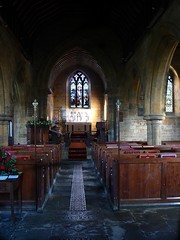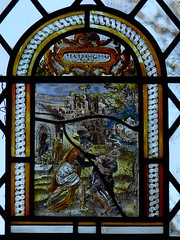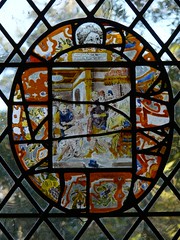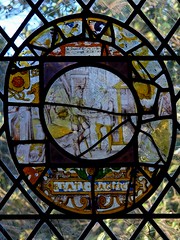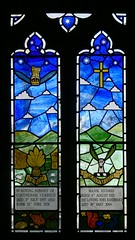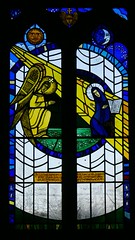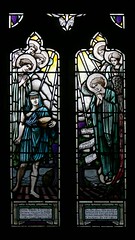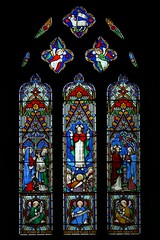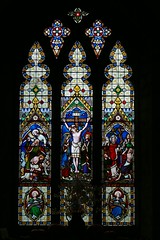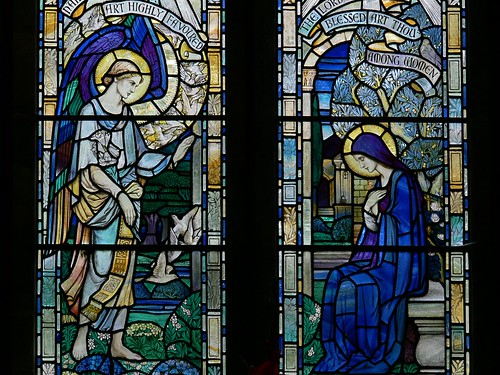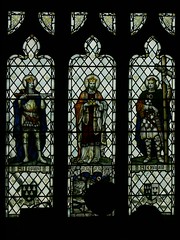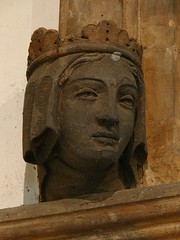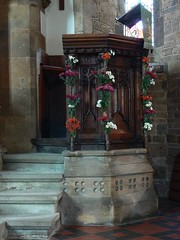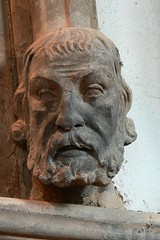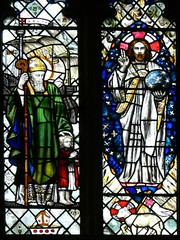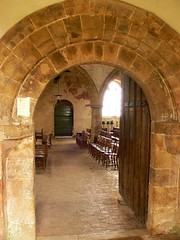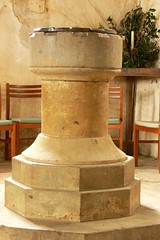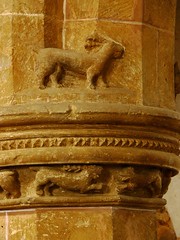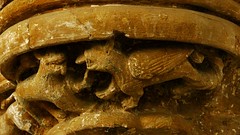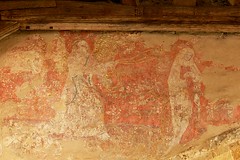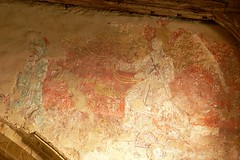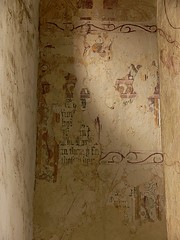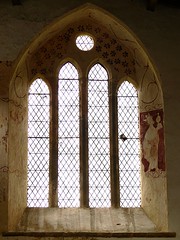Built from Hornton stone in 1866 by C. Buckeridge with a west tower and broached spire. The present church of St. Peter replaces a small medieval church that was located at the other end of the village.
No records remain as to when the earlier church was built, it was certainly after 1086 as there is no record of it in the Doomsday Book. However, when it was demolished in 1865 a Norman piscina was discovered in its foundations.
A number of monuments and pieces of glass were moved from the old church to the new. Including the effigy of Captain Henry
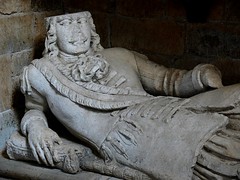

Kingsmill, who was killed at Edgehill on Sunday, 23 October 1642. This was the first pitch battle of the English Civil War. The inscription is on an adjacent slate slab, noting that the monument was erected by his mother Lady Bridgett in 1670.
In the north wall of the chancel is an effigy a headless priest (c1450), wearing the vestments for saying mass, his feet resting on a dog.
The east window of the south aisle has four C17 Dutch panels two of which tell the story of the merciless servant (Matthew, chapter 18). The first panel shows him throttling the debtor that owed him 100 pence, the second panel shows him being carried off to prison.
Another panel depicts a king with his retainers and before him a bound, half-naked prisoner, the inscription ios of no help in deciphering this ‘Adam and Eva ware begiled off the serpent’.
The last panel is two archers, one shooting, the other receiving a cake from a serving man at the door of a kitchen in the background. The inscription here reads ‘The Samaritā set him on his hors and brought him to an inn’.
All of these panels are reputed to have come from a Dorset farm house and were given to Sanderson Miller who originally intended for them to be placed in the octagonal tower at the top of Edgehill.
The north aisle contains some contemporary stained glass work, one by William Nichol dedicated to Major Richard Corfield (2004). The other is an ‘Annunciation’ and dedicated to Victor Gibbins (1995). The south aisle has glass depicting the ‘sower’.
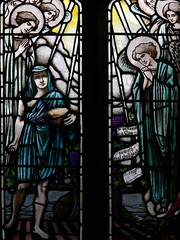

The east window has a representation of the ”Ascension’.

